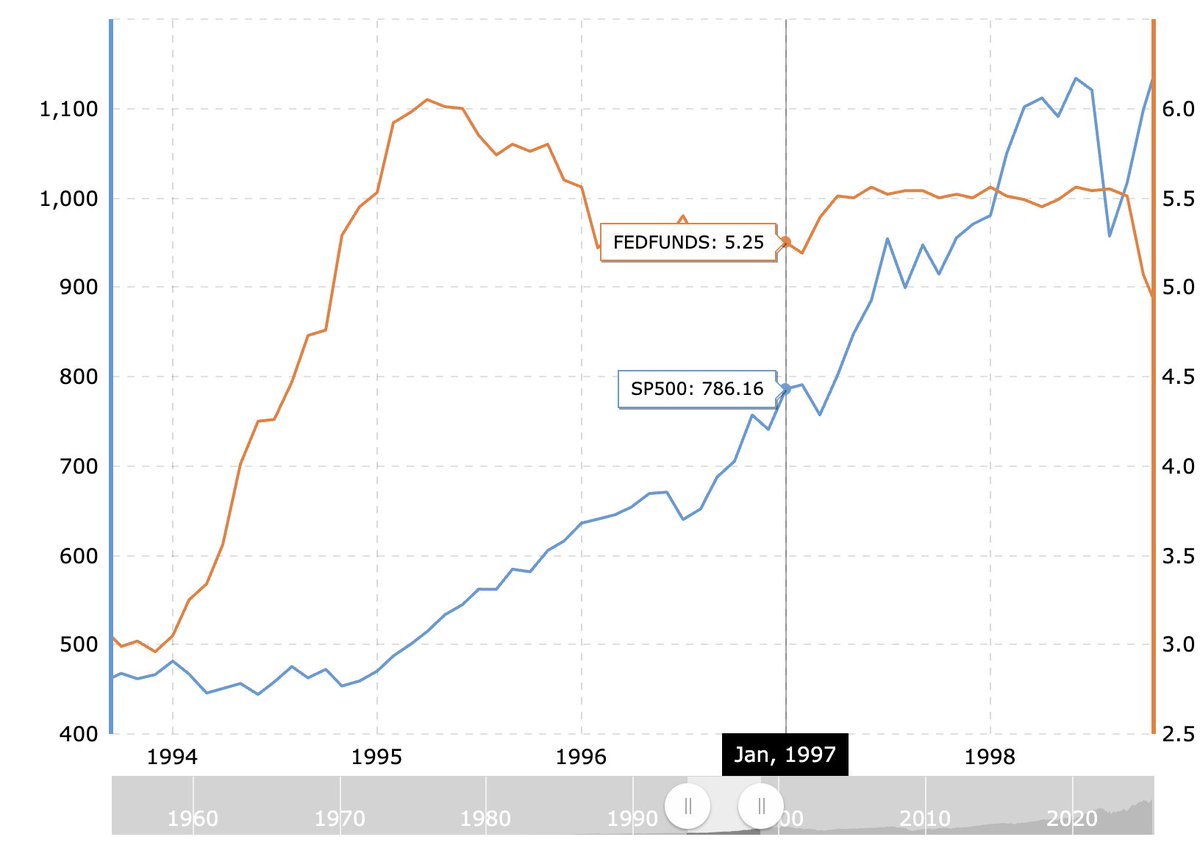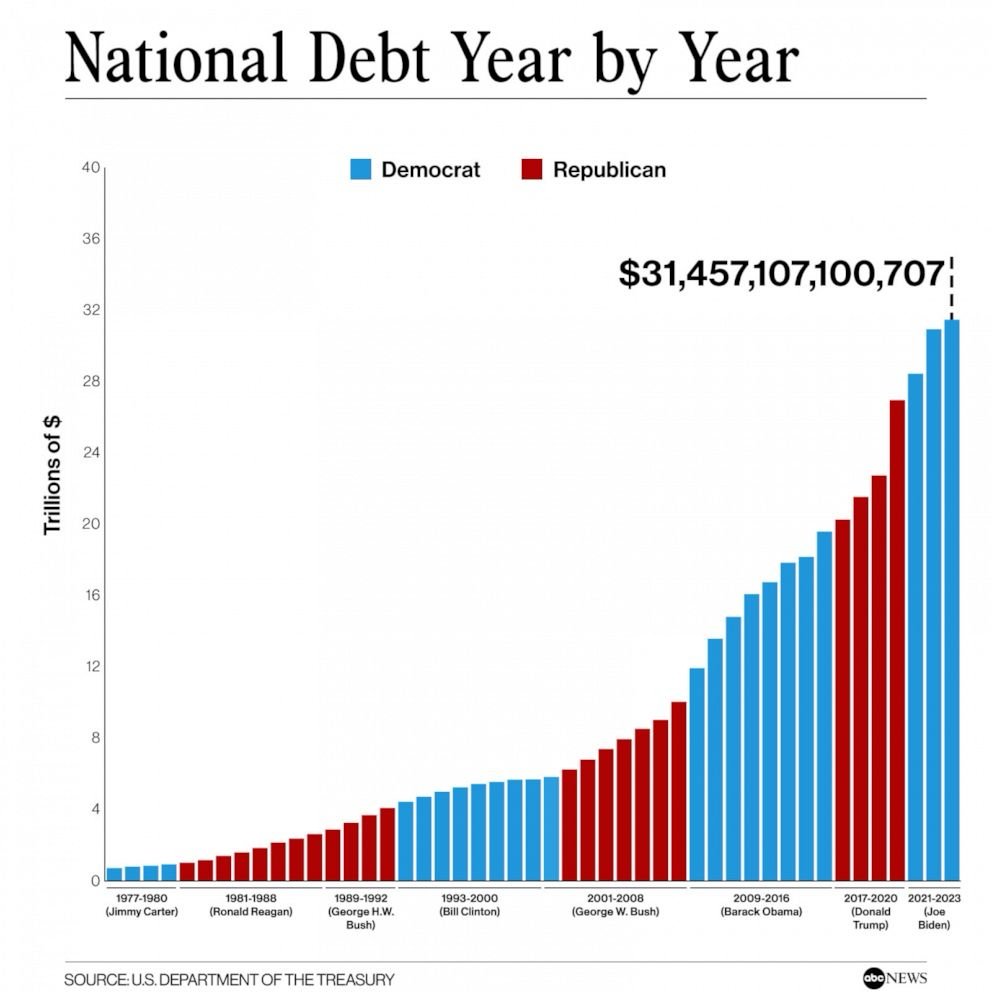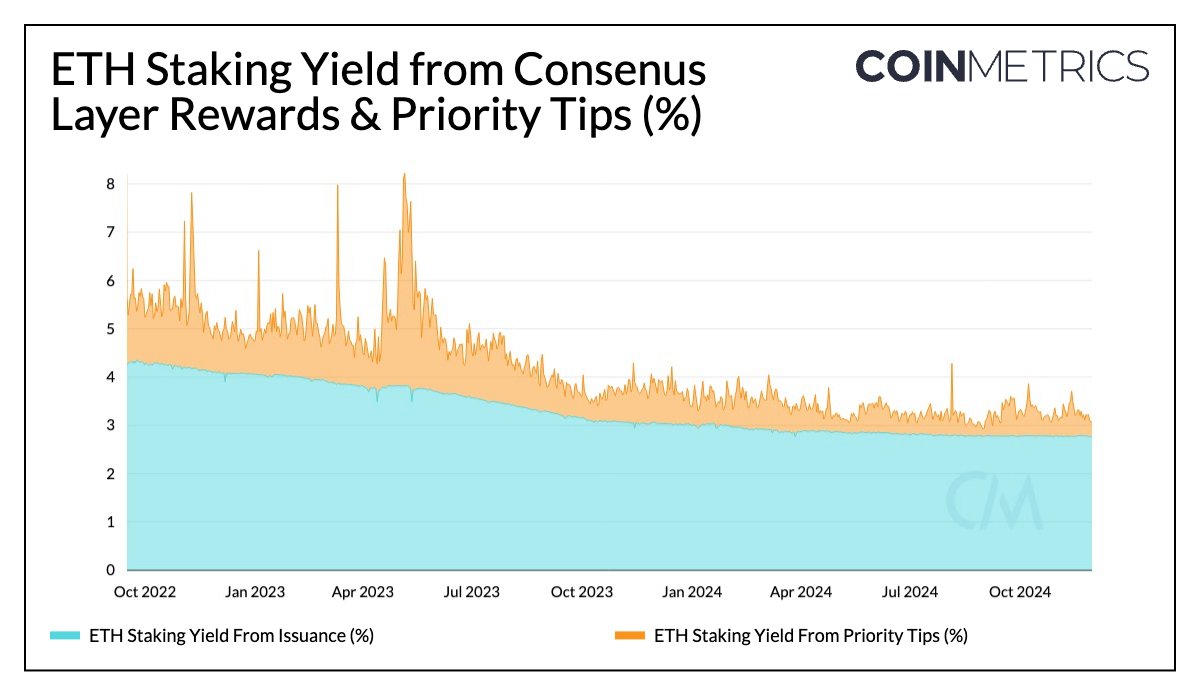Why is "the Fed not cutting interest rates" more beneficial to the US stock and crypto markets in the long run?
Author: Dr.PR
At present, the market is generally focused on "when to cut interest rates", but what is really worth paying attention to is that the Fed maintains high interest rates, which may be a more favorable macro pattern for the US stock and crypto markets in the long term. This view, while counterintuitive, points in the same direction from historical experience, fundamental structure, to fiscal-driven implicit easing.
1. High interest rates ≠ bear markets: History tells us that structural bull markets are often born in high-interest rate environments

Fed federal funds rate vs. S&P 500 (circa 1994–2000)
From 1994 to 2000, for example, the Fed raised the federal funds rate from about 3% to 6% in 1994, and after this rate hike cycle, the US stock market ushered in one of the strongest technology bull markets in history:
-
the S&P 500 index rose from about 470 points to 1500 points from a 2000 high;
-
The Nasdaq returned more than 25% annualized between 1995 and 2000, driving the substantial earnings cycle before the "dot-com bubble";
-
Corporate earnings, technological innovation and return on investment are dominant, not monetary easing itself.
This means that as long as the economy does not have a hard landing, high interest rates are not the culprit of suppressing the stock market.
Second, the essence of the current "no interest rate cut" is confidence in the economy
As of July 2025, the Fed's federal funds target rate range is 4.25%-4.50%. Although it has not eased significantly, it is important – it has not raised interest rates again.
Behind this is the reality that a "soft landing is being realized":
-
Core PCE inflation fell from a high of 5.4% in 2022 to a range of 2.6%-2.7% by mid-2025;
-
GDP growth remains between 1.5% and 3% annualized;
-
the unemployment rate is stable at 4.1%, and the labor market is resilient;
-
The overall EPS of US stocks in 2025 is expected to be in the range of 250-265, and profitability is recovering.
In other words, the essence of not cutting interest rates is that the Fed believes that there is no need to bail out the market because the market is repairing itself.
3. Real "easing" is being driven by finance, not money
Although nominal interest rates have not moved, the current macro liquidity structure of the United States as a whole has shifted to "fiscal-led stimulus".

Annual growth trend of U.S. federal debt
-
The U.S. fiscal deficit in 2024 exceeded 6.4% of GDP, one of the highest since the war;
-
As of July 2025, the total U.S. federal debt has exceeded $36.7 trillion;
-
The net issuance of U.S. bonds in Q3 2025 is expected to exceed $1 trillion;
-
The "Big Beautiful Bill" led by the Trump camp includes large-scale tax breaks and industrial subsidies, which is expected to increase the fiscal deficit by about $3 trillion over 10 years.
Even if the Fed remains on hold, such fiscal spending is constituting a de facto "hidden release".
Fourth, high interest rates purify the market structure and strengthen the logic of the strong
Although the high-interest rate environment has increased the difficulty of financing, it is "good" for large companies:
-
Apple holds more than $130 billion in cash, Alphabet has more than 90 billion, and Meta has nearly 70 billion;
-
At 4%-5% interest rates, this cash generates billions of dollars in interest income on its own;
-
Small and medium-sized enterprises are marginalized in financing costs, and market share is further concentrated in giants;
-
High cash flow buybacks drive EPS upward, and the valuation structure is more stable.
This not only explains why the "Big Seven Technology Stocks" still dominate the market capitalization rankings, but also why index assets continue to hit new highs even when interest rates are high.
5. Crypto market: from speculative games to structural asset allocation
Crypto assets were once seen as "speculative products spawned by zero interest rates", but in the past two years of high interest rate environment, the market structure has undergone profound changes:
1) ETH/BTC has become the allocation target of "digital cash flow" and "digital gold"

Ethereum ETH Staking Yield Trend (Annualized)
-
The annualized rate of return on Ethereum staking is maintained at 3.5%-4.5%, which has the attributes of treasury bonds.
-
BTC has become a core reserve asset in several U.S.-listed companies such as MicroStrategy.
-
ETF launches, re-pledge mechanisms, on-chain governance financial income, etc., make ETH present a combination of "stable income + asset scarcity".
2) The "spread dividend" of stablecoins becomes an invisible profit pool
-
Circle made a profit of more than $1.7 billion in 2024 from interest income on U.S. Treasuries;
-
Tether has earned more than $4 billion from reserve investments in the past year;
-
The stablecoin ecosystem has become more profitable under high interest rates, enhancing the stability of the entire DeFi infrastructure.
3) The survival logic of the crypto market has shifted to "cash flow" and "systematic income"
-
speculative altcoins and memes ebb and flow;
-
Projects with clear revenue models such as Uniswap, EigenLayer, and Lido have received funding favor.
-
The market began to evaluate on-chain assets with "ROE, cash flow, and inflation-resistant ability".
The crypto market is completing the leap from "speculating on stories" to "speculating on structures".
6. Conclusion: This is a revaluation of asset logic, not a reincarnation of macro water release
Interest rate cuts can certainly push up asset prices, but if they are not based on real profitability and structural optimization, they will eventually repeat the bubble burst after 2021.
And this time, the US stock and crypto markets are taking a healthier path:
-
high interest rates but controlled inflation;
-
Fiscal stimulus continues to stimulate, and corporate profits are repaired;
-
strong enterprises gain cash flow advantages;
-
Crypto assets return to economic model competition.
The real slow bull does not rely on the money printing machine, but on the structural reconfiguration of the pricing mechanism and cash flow leverage.
The current "inaction" of the Fed is the most critical background for this structural revaluation to occur.
